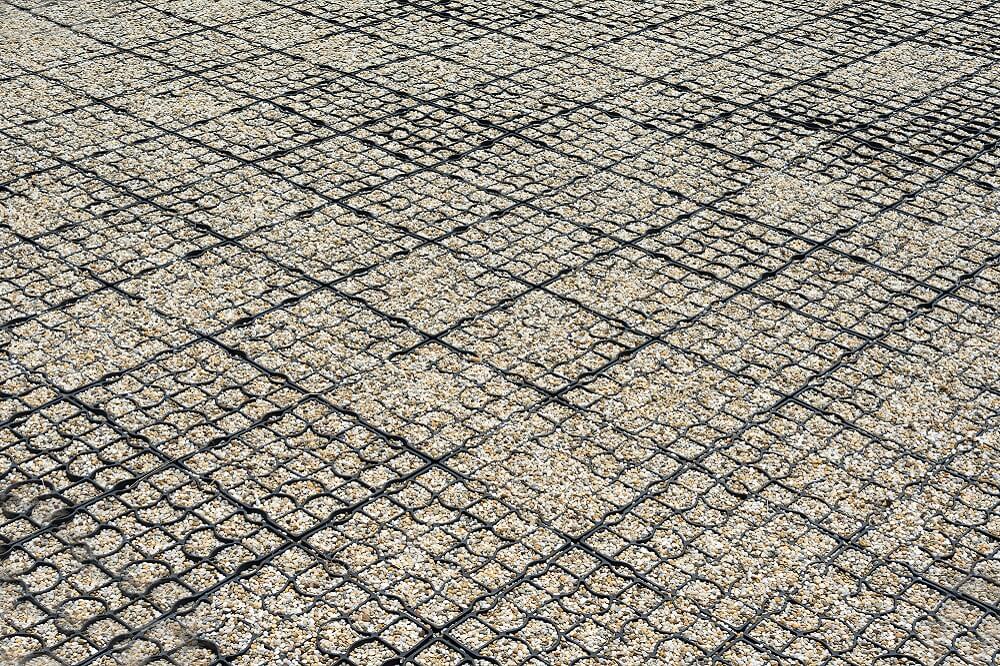
Parking grilles are becoming increasingly popular in urban spaces and on private properties. Their functionality, durability and aesthetic qualities make them the perfect solution for parking spaces. Laying the parking grate may seem like a simple task at first glance, but it is worth paying attention to a few important points to ensure that you and other users can use the space prepared in this way without problems. Would you like to find out how to properly prepare the substrate, what to pay attention to when choosing the materials and how to start laying the grate step by step? Then read on!
Before you start work on laying of parking gratingsIt is worth giving careful consideration to choosing the right parking grate. The different models available on the market may have different characteristics, applications and installation requirements. Remember that this is a decision that can affect the functionality, aesthetics and safety of the entire car park. Before deciding to purchase a particular grille model, there are a few key points to consider. Firstly, it is important to consider the intended use of the area. Grilles for car parking may differ from those designed for trucks or construction machinery. Secondly, it is worth paying attention to the anti-slip properties of the grille. In areas where water or snow accumulates, such a feature often determines the safety of users.
Before proceeding laying parking gratings the most important stage is the careful preparation of the substrate. Its quality and stability will directly affect the durability and functionality of the whole. If you are wondering, how to lay a parking grate so that it serves for many years, you must first of all take care of the ground.
In the first instance, it is worth checking carefully whether the surface is stable. If not, it needs to be properly compacted. Doing so may require removing the loose soil layer and replacing it with a special aggregate such as sand or gravel. The aggregate will not only reinforce the soil, but will also ensure adequate water filtration, which is key to maintaining the properties of the surface protection grilles. The aggregate should then be thoroughly compacted, e.g. with a mechanical rammer to ensure an even and firmly compacted surface. Only on a substrate prepared in this way can you proceed to laying parking gratings.
Starting from one corner of the designated area, it is recommended to laying of parking gratings one next to the other. It is important that each one adheres closely to the previous one, creating a uniform, consistent surface. To maintain evenness and avoid tripping or unevenness, it is a good idea to regularly check the level with a spirit level. If you notice any unevenness or gaps during laying, the problem can be solved quickly. Add or remove aggregate from under the grid as required. This action allows for a perfect fit and stability of each individual grille. It is also worth bearing in mind that some models of parking grilles may require additional protection, for example in the form of special connectors or clips, which provide even greater structural stability.
Once the paving is complete, once again carefully check the entire surface for any irregularities and correct them accordingly. This will ensure that your car park is not only aesthetically pleasing, but above all safe and functional for many years to come.
Once you have finished laying the grilles, it is a good idea to further protect them. Use sand or fine aggregate as a filler for the spaces between the grilles. This has several important functions. Firstly, this material prevents movement of the grilles, which could become loose over time. Secondly, the aggregate or sand absorbs water, preventing it from pooling on the surface of the car park, which usually leads to puddles or icy conditions in colder weather. In addition, filling in the spaces between the grids makes the whole look more aesthetically pleasing. The surface becomes uniform, which has a positive effect on the appearance of the entire car park.
Laying parking grates may seem like a simple task, but as with many construction jobs, the devil is in the details. Adequate preparation, the selection of quality materials and diligence during execution are the keys to success. If you are wondering, how to lay a parking grateKeep these tips in mind and your car park will not only be functional, but also aesthetically pleasing and durable for years to come. It is also worth considering consulting an expert or company specialising in this type of work. Their experience and knowledge can prove invaluable in achieving the desired result.